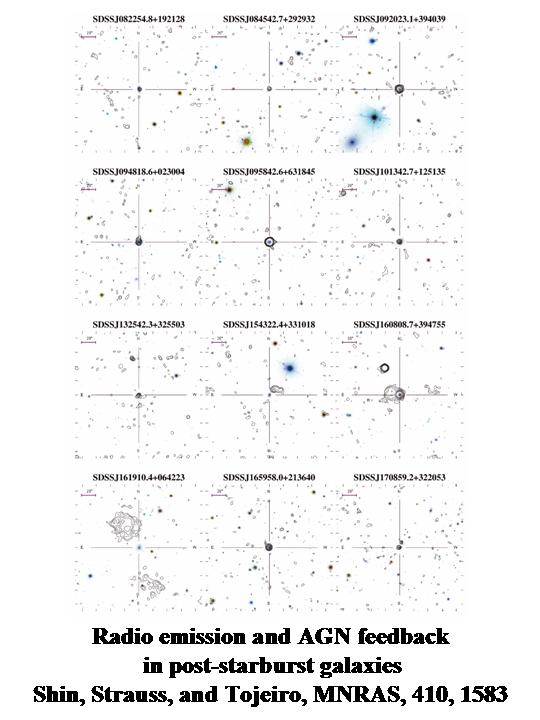
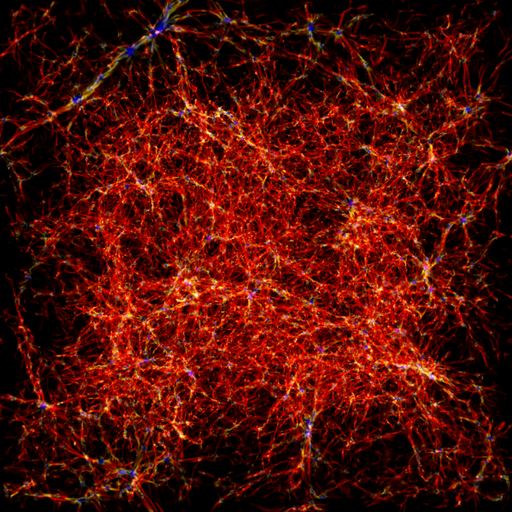
You can find more examples and guides for several visualization parameters in this link.
* Movie files of ram pressure stripping simulations
Runs 0 and 5 in Shin & Ruszkowski 2013.
- ISM with weak turbulent motions : mp4 format. This simulation corresponds to Run 0 in the paper.
- ISM with strong turbulent motions : mp4 format. This simulation corresponds to Run 5 in the paper.
Runs PA1 and PP1 in Shin & Ruszkowski 2014.
- ISM with turbulent motions and ICM with B-field parallel to a ram pressure direction :
mp4 format
- ISM with turbulent motions and ICM with B-field perpendicular to a ram pressure direction :
mp4 format
* Slide and movie files of reionization simulations (Shin, Trac, and Cen, 2008, ApJ, 681, 756 - 770)
Distribution of mass-weighted ionization fraction
: ionization fraction is 1 for red, about 0.5 for green, and 0 for blue.
- 25 Mpc/h subvolume : slide
or
mpeg
- 50 Mpc/h subvolume : slide
or
mpeg
- 100 Mpc/h : slide
or
mpeg (fast but small size)
mpeg (slow but large size)
Distribution of matter density and ionization fraction
: one slice of a simulation box. (shade region = neutral, red = high density)
- 100 Mpc/h :
mpeg
* Examples of Splotch visualization


You can find more examples and guides for several visualization parameters
in this link.
* Gravitational lensing
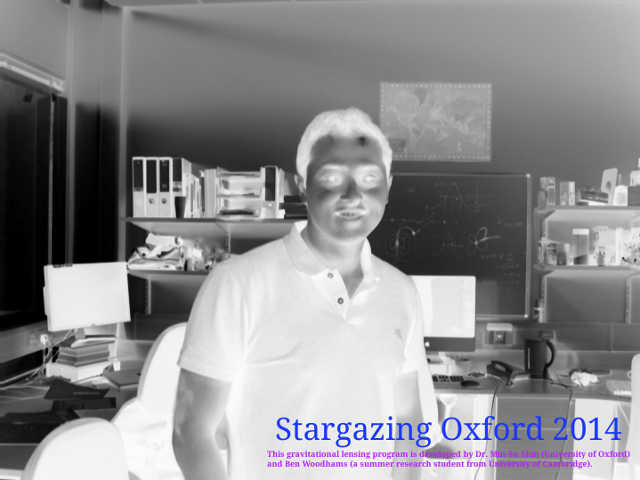
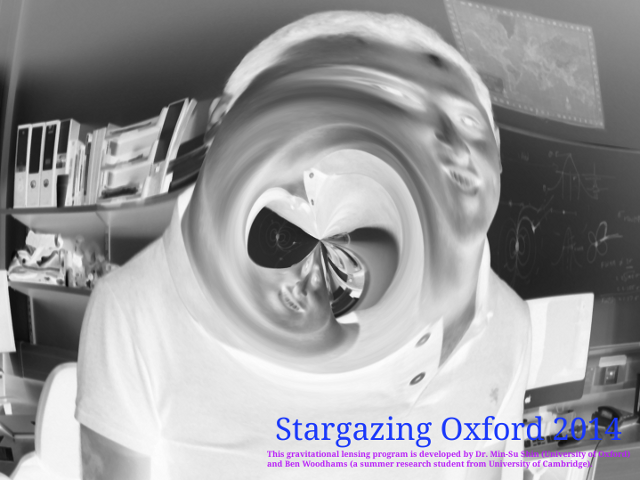
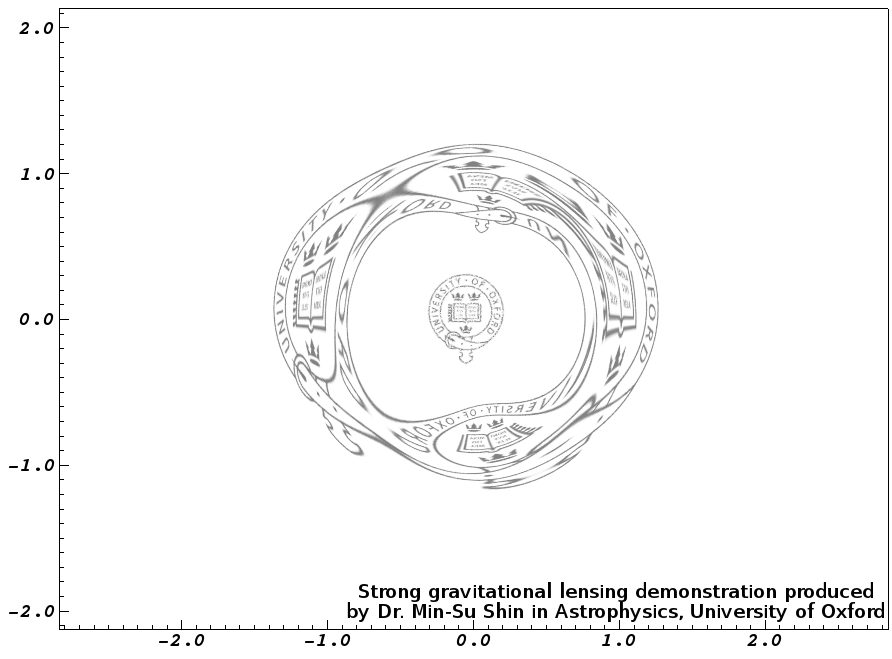
* Colors of asteroids
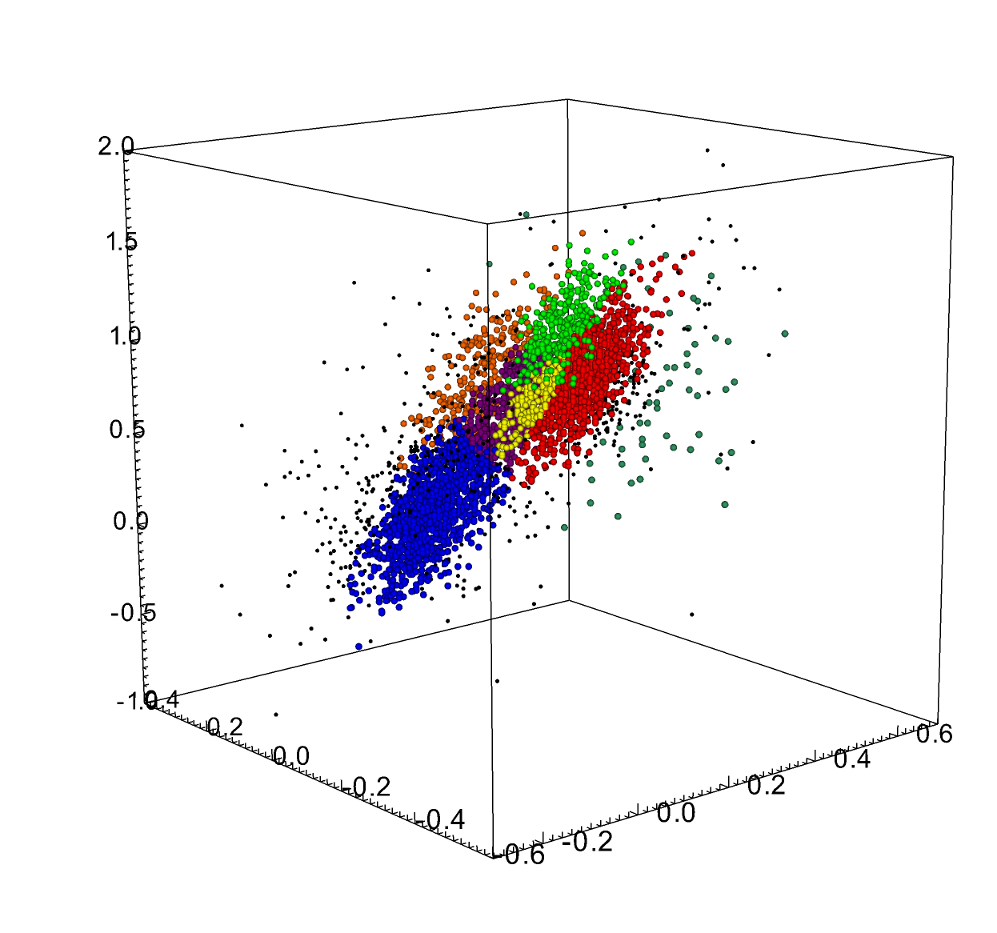
You can see this 3D color distribution in
an interactive 3D plot.
* Astronomical Data Analysis Software and Systems
-
Applications of multiple DBMSs and algorithms for time-domain astronomy (2019):
We present results of using multiple database management systems and algorithms
in processing and analyzing time-domain astronomy data. Redis is adopted as
our main in-memory spatial data storage for processing time-domain alerts. We
also use Google's S2 geometry algorithm and its library to generate light
curve products in out time-domain observation programs. SQL-compatible DBMSs
store source and object catalogs produced in our analysis, and we have tested
three systems: RethinkDB, Vitess, and ClickHouse. Our project uses MongoDB
as a main database engine for light curves. We share our experiences with
these tools in data analysis for time-domain astronomy.
-
Applications of the in-memory database Redis
in processing transient event alerts (2018):
We present results of using the in-memory database Redis in processing
transient event alerts. The Redis works in two different ways
for processing alerts. First, the publication-subscription model in the Redis
allows us to adopt it as a message delivery system for multiple local alert
clients. Second, we use the features of indexing and storing geolocation
information in the Redis to enable low-latency matching of transient locations
with custom catalogs. The current system collects event alerts by using
VOEvent streams and detecting changes in web pages/feeds. We also introduce
our efforts of migrating the system from the Redis message delivery environment
to the NATS-based message processing configuration as well as application of
Uber's H3 spatial indexing model instead of the Redis geolocation support.
-
Applications of Open-source NoSQL Database Systems
for Astronomical Spatial and Temporal Data (2017):
We present our experiences with open-source NoSQL database systems
in analyzing spatial and temporal astronomical data. We conduct
experiments of using Redis in-memory NoSQL database system
by modifying and exploiting its support of geohash for astronmical
spatial data. Our experiment focuses on performance, cost, difficulty, and
scalability of the database system. We also test OpenTSDB as a possible
NoSQL database system to process astronomical time-series data.
Our experiments include ingesting, indexing, and querying millions or
billions of astronomical time-series
measurements. We choose our KMTNet data and the public VVV
(VISTA Variables in the Via Lactea)
catalogs as test data. We discuss issues in using these NoSQL database systems
in astronomy.
-
Application of Open-source Spatio-Temporal Database Systems in
Wide-Field Time-domain Astronomy (2016):
We present our experiences with open-source spatio-temporal database systems
for managing and analyzing big astronomical data acquired by wide-field
time-domain sky surveys. Considering performance, cost, difficulty, and
scalability of the database systems, we conduct comparison studies of open-source
spatio-temporal databases such as GeoMesa and PostGIS that are already being
used for handling big geographical data. Our experiments include ingesting,
indexing, and querying millions or billions of astronomical spatio-temporal
data. We choose the public VVV (VISTA Variables in the Via Lactea)
catalogs of billions measurements for hundreds of millions objects as the
test data. We discuss issues of how these spatio-temporal database systems
can be adopted in the astronomy community.
* Others
